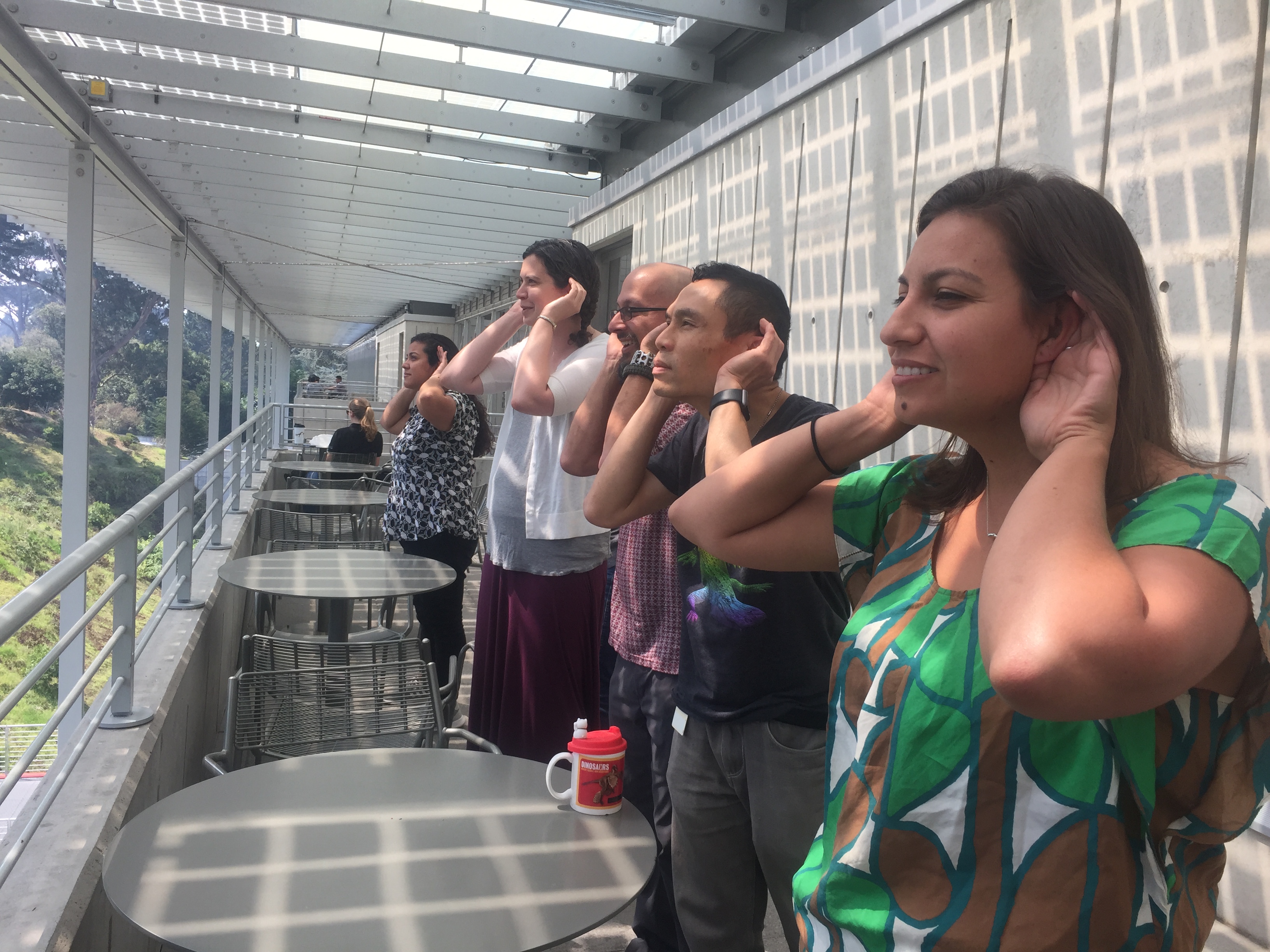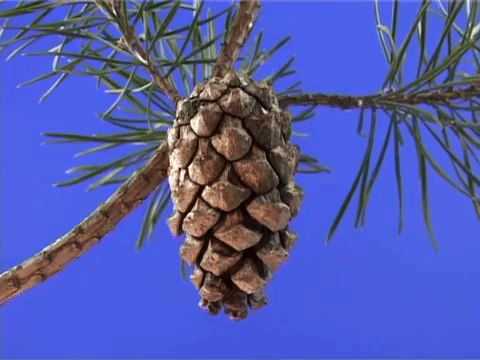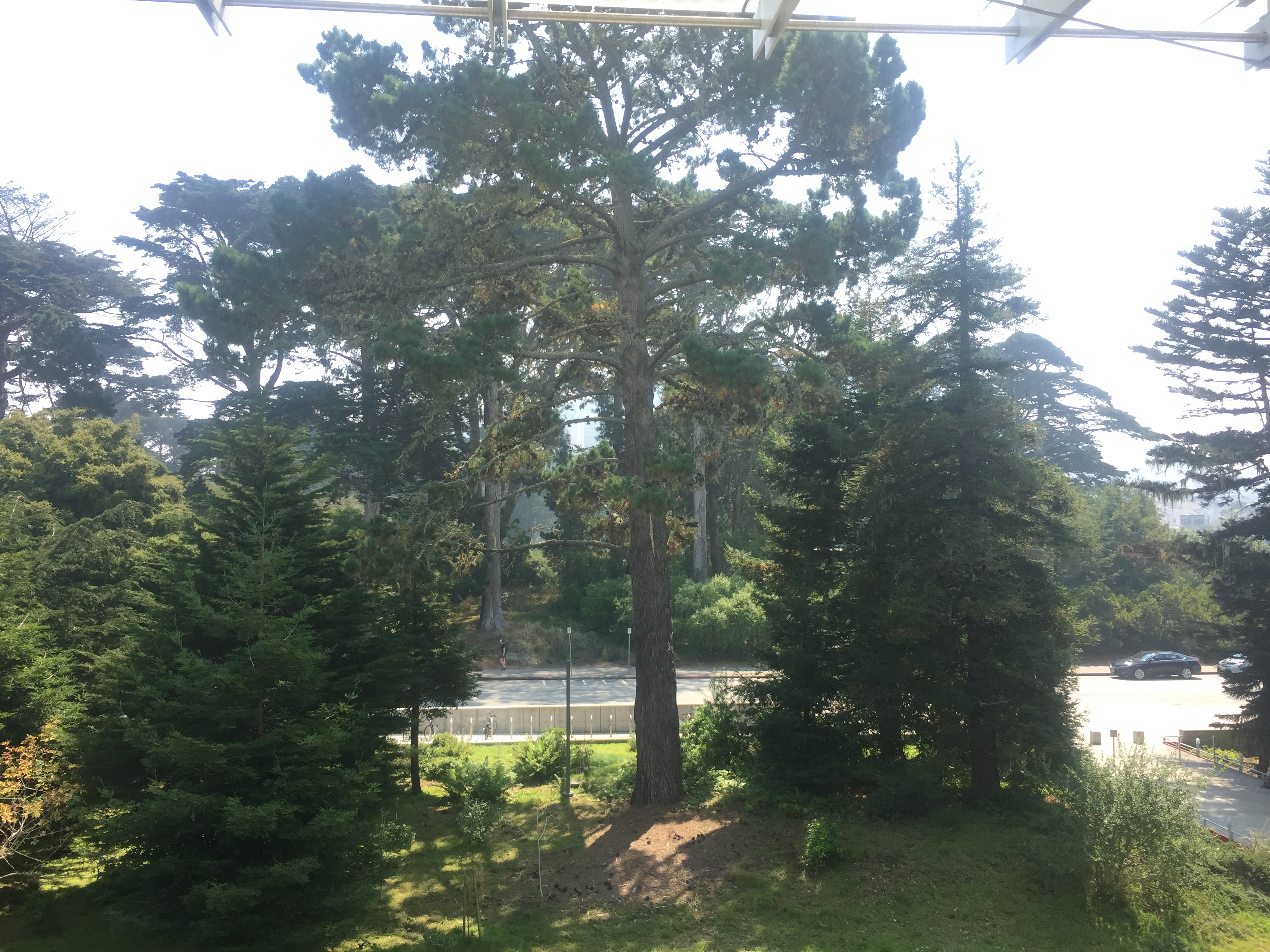On Friday at the museum we are all rushing to finish various tasks before the big holiday weekend. My colleague Lindzy comes by and says, “Hey, Rik, do you have a sec for a nature moment on the balcony?”
I walk out to the balcony of our floor facing the ball field behind the museum. It’s an incredibly warm day for San Francisco — more than 100 degrees — after several weeks of typical cold summer weather. I find a half dozen of the education team cupping their ears to listen to something.

I quickly do the same and I hear this.
It was an odd popping sound, coming from the trees behind the Cal Academy. I ask Lindzy what I’m hearing.
“It’s the pine tree releasing seeds from it’s pine cones! When the temperature gets really hot, it’s what they do.”
What? How have I never heard this before.
Apparently, this is called serotiny, a behavior that certain trees do during extreme temperature situations, particularly forest fires. This is one reason why fires can be good for the forest, leading to new saplings.
According to wikipedia “Serotiny is an ecological adaptation exhibited by some seed plants, in which seed release occurs in response to an environmental trigger, rather than spontaneously at seed maturation.[1] The most common and best studied trigger is fire.” How this works for pine trees is that their cones are sealed with a resin that holds the seeds in place. When heated to a hot enough temperature, the resin melts and the seeds are released explosively, spreading them on the forest floor.
So next time you are in the forest on a hot day, listen for a quiet popping sound. That’s the sound of the next generation of trees being planted.
Here’s a timelapse of a pine cone opening in the heat, showing how well they are evolved for seed dispersal.
Thanks, Shumit, for the awesome sound recording!


